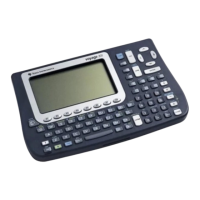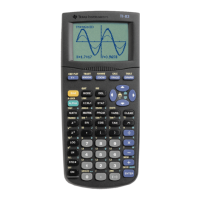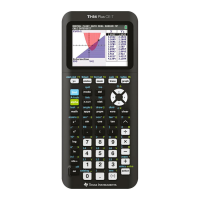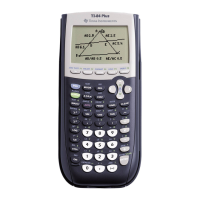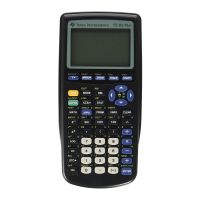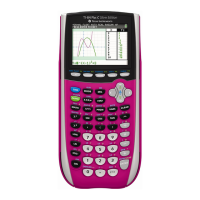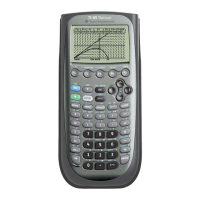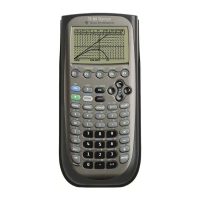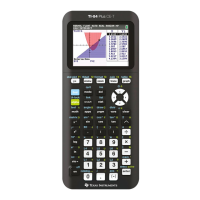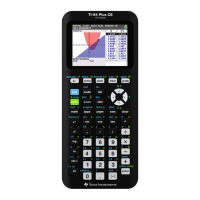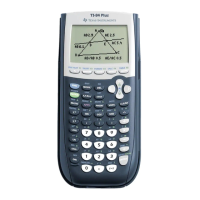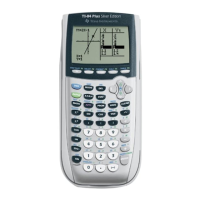TI-82 11
and then press the key that has the desired letter printed above it. When you press the ALPHA key,
the calculator lets you know it is in Alpha mode by displaying the letter A inside the cursor. (If the
calculator is also in Insert mode because 2nd [INS] was pressed first, the Insert mode underline
cursor will have an A printed above the underline.) For example, to produce the letter P on screen,
press the ALPHA key to put the calculator in Alpha mode and then press the 8 key, which has the
letter P printed above it. Notice that after you press the 8 key, the calculator is no longer in Alpha
mode.
If you wish to type several letters in succession, the calculator may be locked in Alpha mode
by pressing 2nd [A-LOCK]. Try using this feature to spell the word CAVE. Press 2nd [A-LOCK] and
then type in the four letters as they are found above the keys. Notice that the calculator stays in
Alpha mode the entire time. To escape from Alpha mode, press the ALPHA key again. The A
should disappear from inside the cursor. (If you had pressed the ENTER key, the calculator would
also have left Alpha mode.) You may have noted the unusual Alpha character written above the
zero key: ς . It represents the spacebar. This character does not show up on screen, but rather this
Alpha character produces a blank space on screen.
page 86
16 Window and Default
The WINDOW screen lets us determine which part of the coordinate plane will be displayed on the
calculator when a graph is drawn. The part that is displayed is sometimes called the viewing
rectangle or graphing window. The default viewing rectangle, which on your calculator is called
the Standard window, is a graphing window in which the displayed values of x and of y vary
from −10 to 10, with tick marks (little scale markings on the axes) occurring one unit apart on
both axes. There are two ways of setting your calculator to this Standard (default) viewing
window. The first is to set it manually. Press the WINDOW key. The Window settings displayed
may be changed by using the arrow keys to move the cursor to the proper line and by typing over
the existing values. The first number, denoted Xmin, represents the smallest value of x to be
displayed on the graphing window. Xmin indicates the value of x at the extreme left edge of the
graphing window when it is displayed. On the Standard (default) viewing window Xmin = −10.
Xmax represents the largest value of x to be displayed on the graphing window. Xmax indicates
the value of x at the extreme right edge of the graphing window. On the Standard (default)
viewing window Xmax = 10. Xscl indicates the distance between tick marks on the x-axis. On the
Standard (default) viewing window Xscl = 1. Ymin represents the smallest value of y to be
displayed on the graphing window. Ymin indicates the value of y at the very bottom of the
graphing window when it is displayed. On the Standard (default) viewing window Ymin = −10.
Ymax represents the largest value of y to be displayed on the graphing window. Ymax indicates
the value of y at the very top of the graphing window when it is displayed. On the Standard
(default) viewing window Ymax = 10. Yscl indicates the distance between tick marks on the y-
axis. On the Standard (default) viewing window Yscl = 1.
In summary, when you have set the Window settings to the Standard (default) values, the
screen should display the following:
Xmin=-10
Xmax=10
Xscl=1
Ymin=-10
Ymax=10
Yscl=1
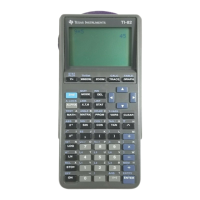
